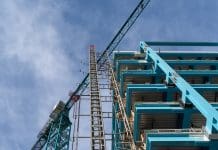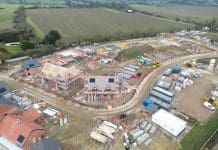Matthew Law, Director at Naismiths, tells lenders what they need to know about monitoring modern methods of construction (MMC)

When Henry Ford introduced the world’s first moving assembly line over a century ago, he slashed the time taken to build a car from over 12 hours to 93 minutes.
Advocates of modular construction say it is poised to have a similar impact on the way we build.
Modular technology – in which large components of a building are manufactured in a factory and then merely assembled on site – is not new, but its star is in the ascendant.
Developers like its ability to deliver units – both resi and commercial – quickly, to a consistent standard, with fewer workers on site and less affected by the vagaries of the British weather.
With ESG becoming an important consideration for lenders, developers and occupiers, supporters praise the way modular components can be hermetically sealed, and thus offer exceptional insulation and energy efficiency qualities.
For all their appeal, projects using modular technology pose a number of additional challenges for development lenders – and these risks need careful monitoring, from the design phase through into construction. Here are the top five issues to watch out for:
-
Mind the gap
Modular components circumvent the need for many traditional tradespeople but lenders need to be aware of any ‘gaps’ between what the modular manufacturer will provide and what is agreed with the on-site contractor.
Contract exclusions might include preparatory works, scaffolding and cladding, as well as permits, licenses and structural warranty management. A good project monitor will want to interrogate all this as part of the budget review; it’s more than just benchmarking.
-
Timing is critical
With the majority of building materials arriving in one go, precise scheduling is more important than ever. All parties will need to sign off on the design pre-manufacture, and substructures must be complete, with craneage and scaffolding in place, before the modular elements arrive on site.
-
Eggs in one basket
The high reliance on the modular manufacturer means contracts should be studied carefully for project risk. What would happen if delivery of vital components were held up, or if the manufacturer were to go bust with the order unfulfilled?
Funders need to know what security arrangements are in place for such eventualities. Is the developer paying a large advance for modular components, and what bonds or collateral warranties is the manufacturer offering?
-
Quality control and capability
Compared to conventional construction techniques, the scope for on-site corrections if measurements are slightly off is minimal. Quality control, therefore, needs to be managed closely, from design coordination and pre-manufacture sign-off through to factory inspection and final delivery of the modular components.
Similar due diligence should be done on professional suppliers. The manufacturer’s track record and previous work should be scrutinised, and the modular technology selected should be accredited by a trusted third party such as the Buildoffsite Property Assurance Scheme (BOPAS). The developer should also be encouraged to engage a project manager who is skilled in the early identification and management of modular risks.
-
Insurance
This requires careful scrutiny as standard policies may not cover modular construction. In addition to the standard employer’s, public liability and contract work cover, the funder will usually demand collateral warranties from the design parties – including the architect, surveyor and modular manufacturer.
While design liability will typically rest with these parties, there may be gaps in responsibility unless there is absolute clarity of scope. A good project monitor will review the scope of services provided by these suppliers, but it may also be beneficial to consider a project-specific insurance policy. In addition, structural defects insurance needs to be chosen carefully to ensure the policy will cover modular construction.
Modern methods of construction – of which modular is the torchbearer – are rapidly gaining acceptance among both builders and occupiers. With careful monitoring of the developer’s design, tendering and construction phases, lenders can be confident that the units built will be robust, attractive and saleable.













